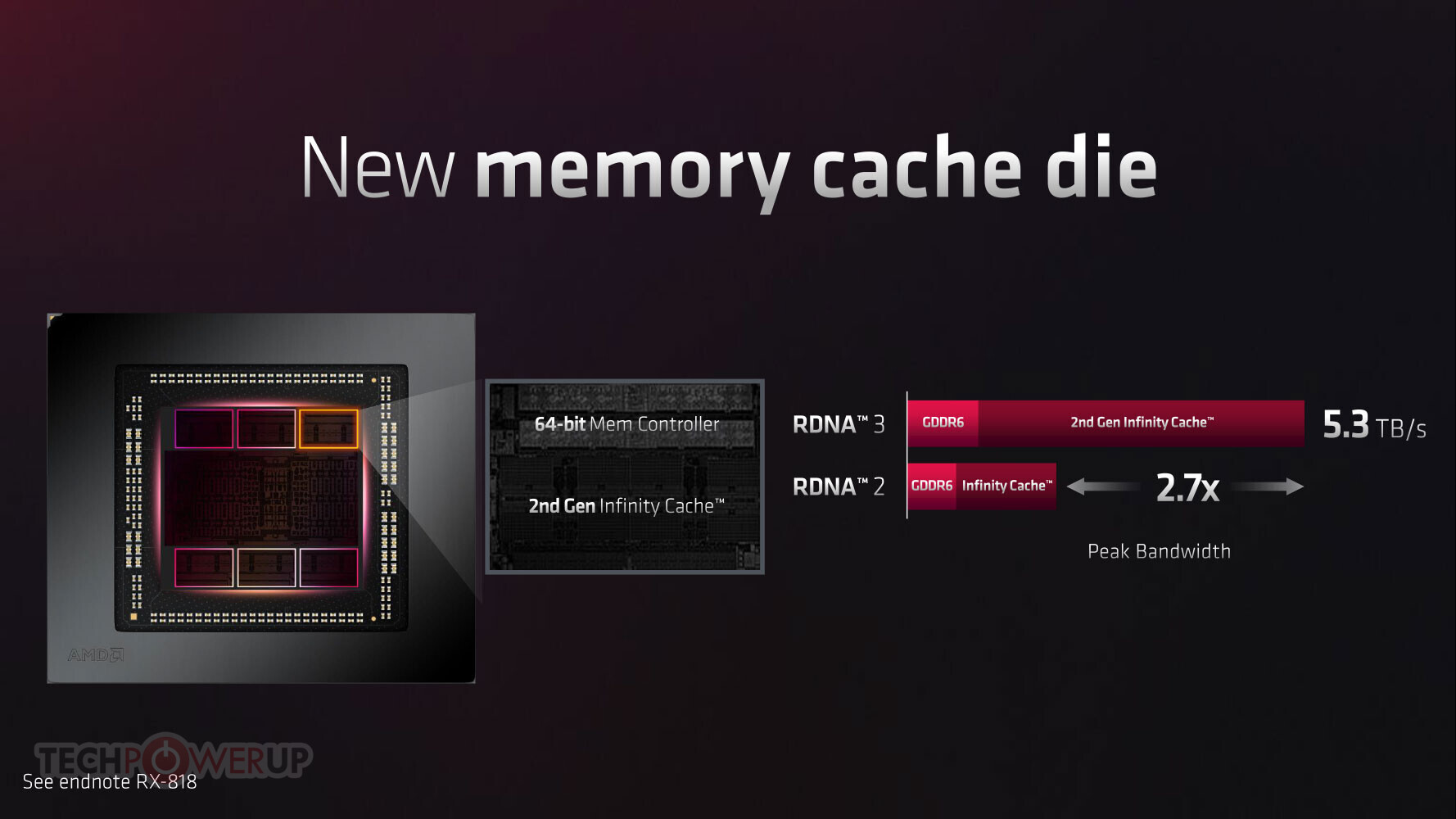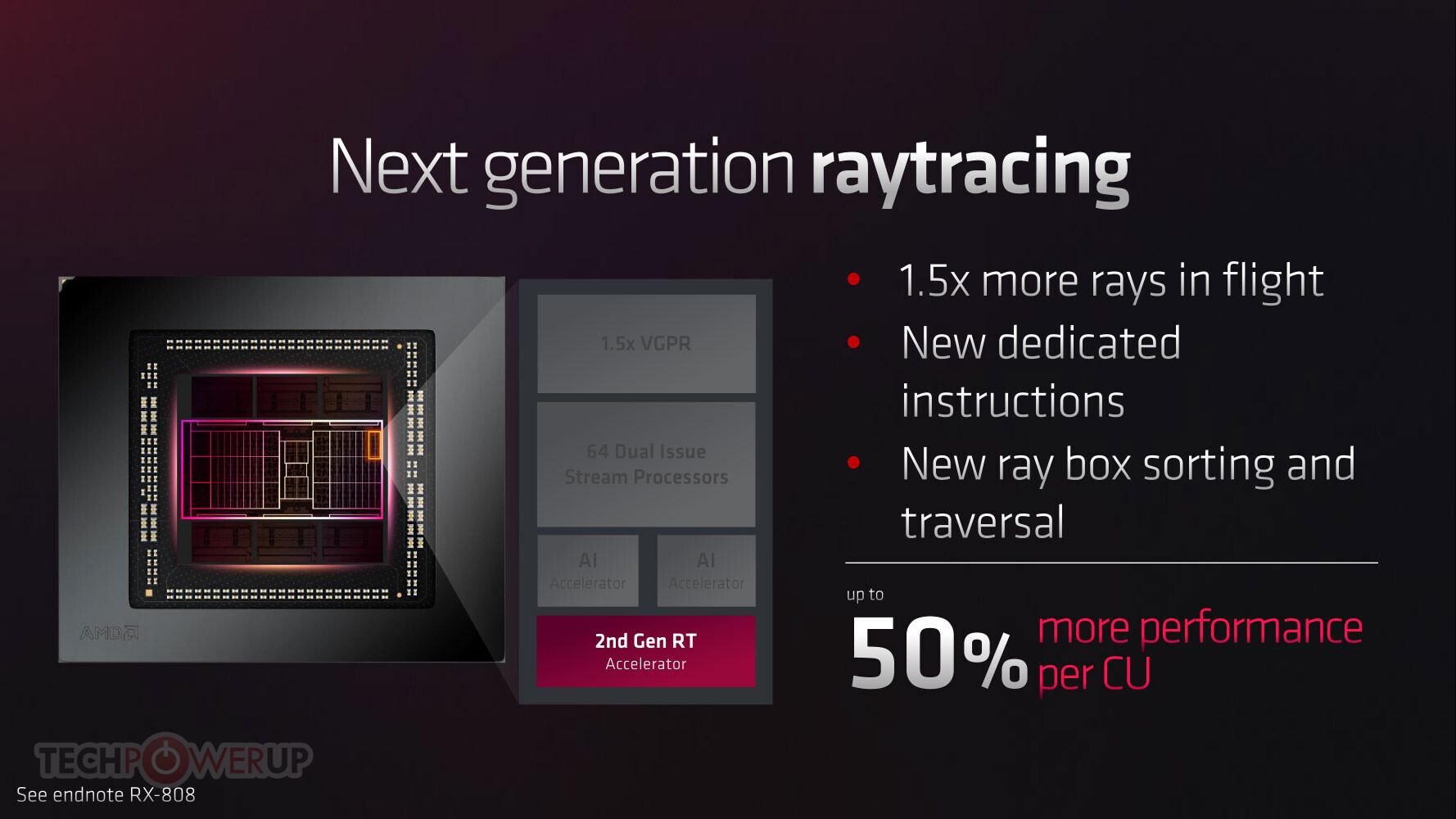I found some interesting slides from AMD from when RDNA3 was launched:

A large increase (nearly double) the bandwidth of RDNA2, which itself had increased max bandwidth a lot with the 1st generation of infinity cache. This is really good, because even though they're lowered the amount of infinity cache for the Navi32 die GPUs (like the RX 7800 XT) to 64MB, the performance should still be the same, in comparison to models like the RX 6800 XT.
Also, Navi31 GPUs should all have higher peak memory bandwidth, compared to RDNA2 GPUs.

50% improvement in RT performance per Compute Unit. This is pretty good, but I remember predicting (and hoping for) a 100% improvement for RDNA3.
It just means you'd have to buy a GPU with a lot of compute units, to make up for only a modest improvement in RT vs RDNA2. The only problem with this, is that AMD has apparently already maxed out the Compute Unit count on Navi31, with the 7900 XTX (96 CUs).
Lets hope their implementation of frame generation allows some really high framerates on RT games...

A large increase (nearly double) the bandwidth of RDNA2, which itself had increased max bandwidth a lot with the 1st generation of infinity cache. This is really good, because even though they're lowered the amount of infinity cache for the Navi32 die GPUs (like the RX 7800 XT) to 64MB, the performance should still be the same, in comparison to models like the RX 6800 XT.
Also, Navi31 GPUs should all have higher peak memory bandwidth, compared to RDNA2 GPUs.

50% improvement in RT performance per Compute Unit. This is pretty good, but I remember predicting (and hoping for) a 100% improvement for RDNA3.
It just means you'd have to buy a GPU with a lot of compute units, to make up for only a modest improvement in RT vs RDNA2. The only problem with this, is that AMD has apparently already maxed out the Compute Unit count on Navi31, with the 7900 XTX (96 CUs).
Lets hope their implementation of frame generation allows some really high framerates on RT games...
Last edited:


